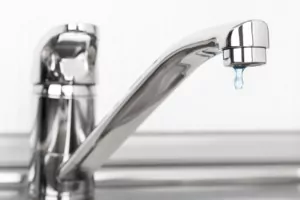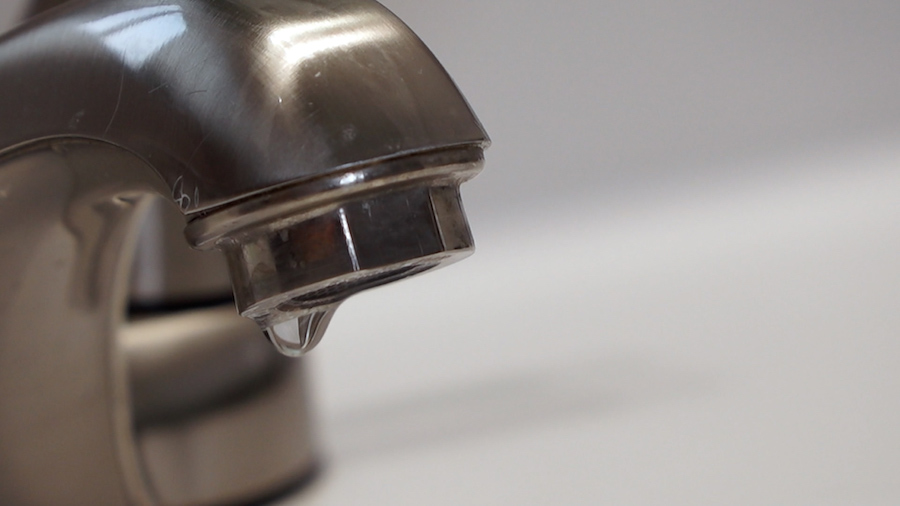We've noticed the article relating to Health Risks Posed by Leaking Faucets directly below on the web and reckoned it made perfect sense to write about it with you in this article.

Intro
A leaky tap might feel like a minor annoyance, however its consequences prolong far beyond the periodic drip. Recognizing the results of a dripping tap is vital for both home owners and the setting. In this post, we'll check out the different impacts of this usual family problem and why addressing it without delay is crucial.
Root Causes Of Leaky Faucets
Leaking taps can arise from a variety of variables, consisting of wear and tear, high water stress, and corrosion. In time, the constant use faucets can cause worn-out seals and gaskets, triggering leaks to establish. Additionally, extreme water stress can put stress on plumbing fixtures, resulting in leakages. Corrosion and rust can additionally compromise tap parts, making them prone to leak.
Water Wastage
One of one of the most substantial consequences of a leaking tap is water wastefulness. Also a small drip can add up to gallons of wasted water gradually. This not just increases water costs yet also contributes to water scarcity and environmental degradation. Dealing with leaking taps without delay is important for preserving this precious resource and reducing its influence on the world.
Financial Influence
In addition to drainage, dripping faucets can likewise have a substantial financial impact. Boosted water costs are a straight consequence of water wastage, costing house owners numerous bucks each year. In addition, the price of fixing water damages brought on by leakages can be significant, specifically if left neglected for a prolonged period.
Environmental Impact
The environmental influence of dripping faucets extends past water wastefulness. By saving water, homeowners can add to wider efforts to minimize water shortage and safeguard natural ecological communities. Lasting alternatives such as rain harvesting and water-efficient fixtures can better minimize the environmental impact of house water use.
Technological Solutions
Developments in innovation have resulted in the advancement of clever faucets and water-saving devices that help decrease water wastefulness. Smart taps utilize sensing units to find activity and readjust water circulation as necessary, minimizing waste without giving up ease. Water-saving tools such as aerators and low-flow showerheads are additionally effective in conserving water without jeopardizing performance.
Global Point of views
While dripping taps might appear like a local problem, they add to more comprehensive international challenges such as water deficiency and environment adjustment. In regions already facing water stress and anxiety, every decrease counts, making leakage avoidance and repair work necessary. By taking on water-saving practices and buying sustainable innovations, homeowners can play their part in resolving these pressing worldwide concerns.
Regulatory Procedures
Federal government regulations play a vital duty in mitigating the impact of leaking taps and advertising water preservation. From constructing codes that require water-efficient fixtures to water-saving incentives and refunds, policymakers have a range of tools at their disposal. By implementing and imposing these policies, governments can guarantee that property owners prioritize water conservation in their daily lives.
Area Influence
Attending to leaking faucets requires cumulative initiatives at the neighborhood level. By elevating understanding about the value of water conservation and providing sources for leak discovery and repair service, local authorities can encourage homeowners to take action. Efforts such as water-saving discount programs and leakage detection campaigns can incentivize behavior modification and advertise accountable water usage.
Situation Studies
Real-life examples of the impact of dripping faucets highlight the significance of aggressive maintenance and timely fixings. From water damage to escalating water costs, the consequences of neglecting leakages can be severe. By sharing these case studies, house owners can much better recognize the significance of attending to leaking taps without delay.
Educational Campaigns
Educational projects play an essential function in increasing understanding about the effects of leaky faucets and promoting water conservation practices. Via workshops, workshops, and on-line sources, house owners can discover exactly how to discover and repair leaks themselves. By encouraging people with understanding and tools, instructional projects can promote a culture of liable water use within communities.
Wellness Worries
Leaky taps can produce conducive settings for mold and mold growth, posturing health and wellness risks to passengers. The presence of mold and mildew can intensify respiratory system issues and allergic reactions, particularly in prone people. Furthermore, water damages resulting from leaks can jeopardize the architectural integrity of buildings and cause pricey repairs.
DIY vs. Expert Fixing
When faced with a leaking faucet, house owners often debate whether to attempt repair work themselves or employ an expert plumber. While do it yourself fixings can conserve cash, they might not constantly resolve the hidden concern properly. Specialist plumbing professionals have the proficiency and tools to identify and take care of leaks correctly, ensuring lasting options and comfort for property owners.
Preventive Measures
Protecting against leaking faucets calls for routine maintenance and aggressive steps. Simple jobs such as replacing damaged washers and seals can protect against leaks from creating. Furthermore, upgrading to top notch fixtures and minimizing water pressure can assist prolong the life expectancy of taps and minimize the danger of leaks.
Final thought
Finally, the effects of a leaking tap extend far beyond the periodic drip. From water wastage and enhanced water expenses to wellness concerns and environmental effect, the repercussions of overlooking leakages can be significant. By dealing with leaking faucets immediately and embracing water-saving methods, home owners can minimize these results and contribute to a much more sustainable future.
Why You Shouldn’t Ignore a Leaky Faucet in Your Home
What Causes a Leaky Faucet?
Various factors can cause a leak, from loose and worn-out parts to corrosion. Your faucet has four essential components from which most plumbing issues will stem: the O-ring, the valve seat, the washer and the gasket.
What Is an O-Ring?
The O-ring is a stem screw that fastens parts of the faucet in place, preventing water from leaking out of the spout. Depending on your faucet type, the stem might have multiple O-rings. Water will drip from the faucet’s handles and base if this part breaks or deteriorates.
What Is a Valve Seat?
The valve seat controls the flow and temperature of the water. Found at the base of the handle, it works as a seal for the faucet’s stem. The valve seat ensures the water is allowed to flow or is blocked as the handles dictate. You’ll know it’s malfunctioning when water leaks from your faucet’s sides.
What Is a Gasket?
The gasket is found between the water inlet and the valve stem. It creates a seal between the faucet and the sink, holding its joints by aerators attached to the stem’s head. Water will trickle out from the base if the gasket isn’t working.
What Is a Washer?
The washer secures the handles and prevents leakage, serving a similar purpose to the O-ring. While the O-ring is ordinarily round and made from an elastic material, such as rubber, the washer is square-shaped and composed of brass, copper and other hard metals. If it malfunctions, corrodes or has been improperly installed, water will leak out of the handles, causing that incessant faucet drip.
Why Is a Leaky Faucet Dangerous?
A leaky faucet left alone for too long can have significant consequences.
Pest Infestations
Since bugs and rodents gravitate towards the scent of water, a leaky faucet will draw pests to your sink. Both are looking for leaks accessible through crawl spaces, which a faucet provides. If you leave water dripping for too long, you run the risk of an infestation.
Rust
If one of the faucet parts has started to corrode, the resulting rust can spread to your pipes and valves with startling speed. The rust might even lead to cracks or other impairments, resulting in more severe plumbing issues.
Your sink could also sustain damage from a leaky faucet. The water in your tap possesses sparse elements of calcium and iron that can stain your sink with repeated and prolonged exposure. Once those elements in the water have been open to the air for some time, your sink will start to rust, creating marks that can be difficult to remove.
https://www.tomsmechanical.com/blog/why-you-shouldnt-ignore-a-leaky-faucet-in-your-home

I discovered that piece on The Environmental Impact of Leaky Faucets while exploring the web. Those who liked our article please make sure you remember to share it. I am grateful for being here. Come back soon.